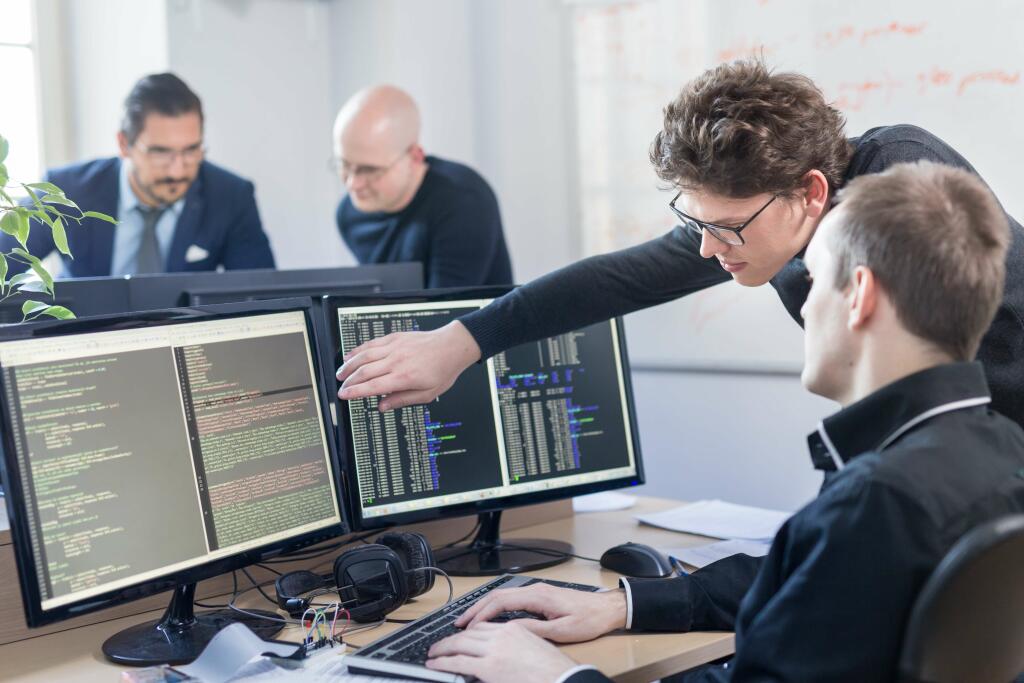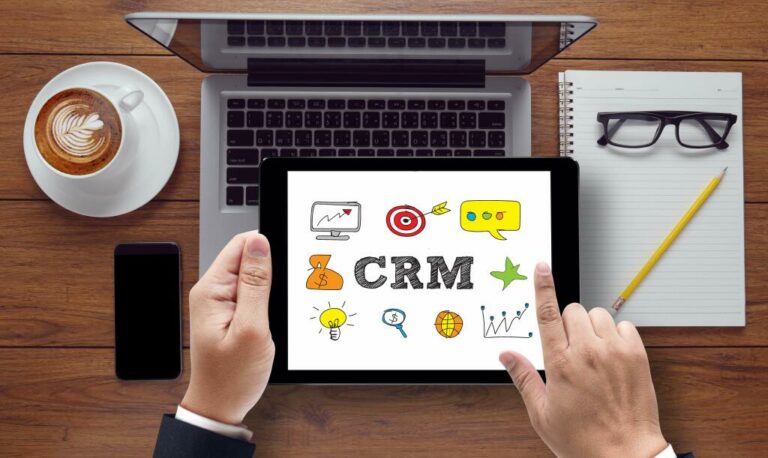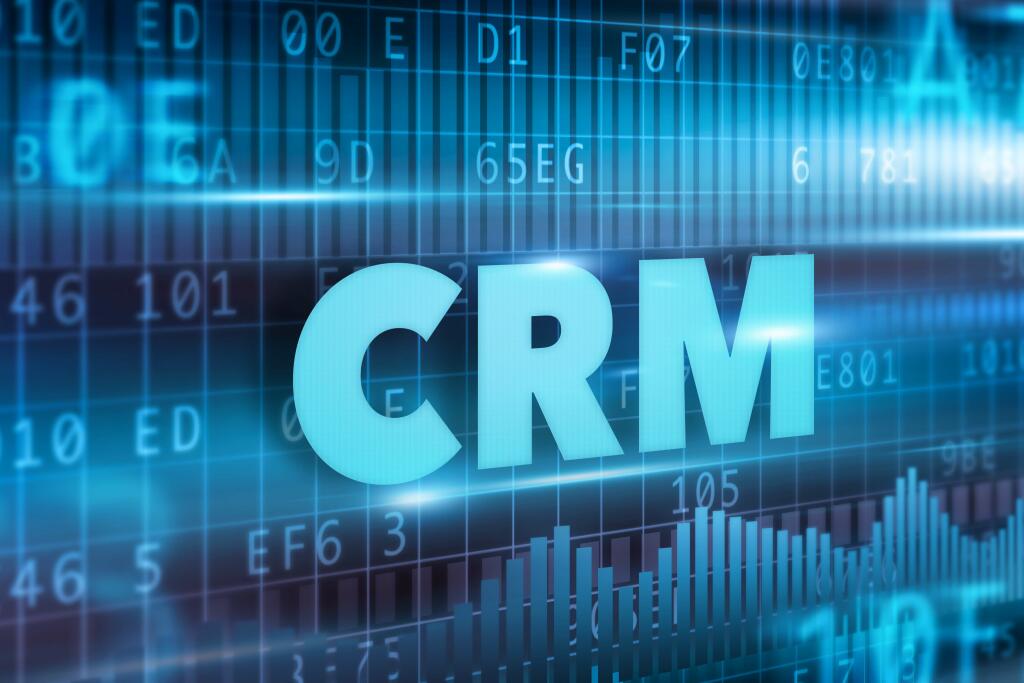Содержание
- The Difference Between Facial Recognition Vs Facial Authentication
- Why Are Canon & Nikon So Different In Photo Color?
- How To Design A Company’s Facebook Profile Photo
- Fiducial Vs Pixel Detection
- Facial Recognition Pros And Cons
- Facial Recognition For Time And Attendance
- Facial Recognition And Its Use In Law Enforcement
- How To Make A Tone Map In Jpeg With Photoshop
Apple’s iPhone X unveiled its Face ID facial recognition technology in 2017. That’s when mathematician and computer scientist Woodrow Wilson Bledsoe first developed a system of measurements that could be used to put photos of faces in different classifications. Because of this work, Bledsoe is known as the unofficial father of facial recognition technology. The facial recognition https://globalcloudteam.com/ market is expected to grow to $7.7 billion in 2022, an increase from $4 billion in 2017. There are few measures in place to protect everyday Americans from the misuse of face recognition technology. In general, agencies do not require warrants, and many do not even require law enforcement to suspect someone of committing a crime before using face recognition to identify them.
TSA had expressed its intention to adopt a similar program for domestic air travel during the security check process in the future. The American Civil Liberties Union is one of the organizations against the program, concerning that the program will be used for surveillance purposes. Other algorithms normalize a gallery of face images and then compress the face data, only saving the data in the image that is useful for face recognition. One of the earliest successful systems is based on template matching techniques applied to a set of salient facial features, providing a sort of compressed face representation. Real-time face detection in video footage became possible in 2001 with the Viola–Jones object detection framework for faces.

Many popular face-matching services use face recognition to match a user’s photo with a similar-looking celebrity, for example, StarByFace or PicTriev. Want to protect Face Recognition App your privacy in a world in which facial recognition technology is becoming more common? Your image may show you looking straight ahead or nearly in profile.
The Difference Between Facial Recognition Vs Facial Authentication
Customs and Border Protection at Hartsfield–Jackson Atlanta International Airport.

These were crude compared to the technology today, but the work on these systems did lead the way to modern facial recognition programs. Face recognition software is especially bad at recognizing African Americans. A 2012 study[.pdf] co-authored by the FBI showed that accuracy rates for African Americans were lower than for other demographics. Face recognition software also misidentifies other ethnic minorities, young people, and women at higher rates. Criminal databases include a disproportionate number of African Americans, Latinos, and immigrants, due in part to racially biased police practices.
The Home Depot, Menards, Walmart, and 7-Eleven are among other US retailers also engaged in large-scale pilot programs or deployments of facial recognition technology. Police forces in at least 21 countries of the European Union use, or plan to use, facial recognition systems, either for administrative or criminal purposes. The government of Delhi in collaboration with Indian Space Research Organisation is developing a new technology called Crime Mapping Analytics and Predictive System .
A human could process about 40 pictures an hour in this manner and so build a database of the computed distances. A computer would then automatically compare the distances for each photograph, calculate the difference between the distances and return the closed records as a possible match. Data breaches, compliance mandates, and identity theft have made it increasingly difficult for organizations and individuals to establish trust online. From the baseline identification of a customer or user to the recurring authentication process of ensuring that the person logging into or using your…
Why Are Canon & Nikon So Different In Photo Color?
During the liveness check and selfie-taking process, a biometric template is created. Similar to a facial signature, this template is an algorithm that is unique to the user and it’s this template that is stored by the business customer for future authentication events. We have only scratched the surface of what facial recognition can do to improve global safety, security, and efficiency.
The FBI can access over 400-million non-criminal photos from state DMVs and the State Department, and 16 U.S. states allow FACE access to driver’s license and ID photos. Throughout the ’70s, ’80s, and ’90s, new approaches with catchy names like the “Eigenface approach” and “Fisherfaces” improved the technology’s ability to locate a face and then identify features, paving the way for modern automated systems. In January 2020, the European Union suggested, but then quickly scrapped, a proposed moratorium on facial recognition in public spaces.
How To Design A Company’s Facebook Profile Photo
Here’s an example of how Qualcomm and CyberLink have worked together to integrate facial recognition in POS solutions. Let’s explore some of these use cases to learn how retail stores can benefit from facial recognition. Traditionally, effective surveillance is dependent on watching live video feeds or recordings and manually alerting designated personnel of any unexpected event. Facial recognition plays an important role in a security strategy known as zero trust. The fundamental concept of zero trust is that there is no implicit trust granted to assets or user accounts based solely on their physical or network location.
- The Department of Homeland Security has used the technology to identify people who have overstayed their visas or may be under criminal investigation.
- As investments in face recognition technologies increase and technologies mature, we see facial recognition usage increasing in some use cases, including new ones.
- There is a difference between facial recognition and facial comparison, even though both of these approaches use the same technology to compare face similarity.
- First face detection is used to segment the face from the image background.
- A “false negative” is when the face recognition system fails to match a person’s face to an image that is, in fact, contained in a database.
- In November 2020, the Interior ministry announced plans to use it in real-time to identify people suspected of seeking asylum.
- Apple’s iPhone X unveiled its Face ID facial recognition technology in 2017.
In Colombia public transport busses are fitted with a facial recognition system by FaceFirst Inc to identify passengers that are sought by the National Police of Colombia. FaceFirst Inc also built the facial recognition system for Tocumen International Airport in Panama. The face recognition system is deployed to identify individuals among the travelers that are sought by the Panamanian National Police or Interpol. Tocumen International Airport operates an airport-wide surveillance system using hundreds of live face recognition cameras to identify wanted individuals passing through the airport. Three-dimensional face recognition technique uses 3D sensors to capture information about the shape of a face. This information is then used to identify distinctive features on the surface of a face, such as the contour of the eye sockets, nose, and chin.One advantage of 3D face recognition is that it is not affected by changes in lighting like other techniques.
The result is that the images used to create the underlying algorithms and databases are often collected surreptitiously and without consent. It is still contested as to whether or not facial recognition technology works less accurately on people of color. One study by Joy Buolamwini and Timnit Gebru found that the error rate for gender recognition for women of color within three commercial facial recognition systems ranged from 23.8% to 36%, whereas for lighter-skinned men it was between 0.0 and 1.6%.
Another market that’s growing is that of facial recognition software tools and solutions. However, it’s clear that growth won’t be the same everywhere in the world and the vendors will differ too. Even with COVID-19 driving the market, facial recognition is perceived quite differently across the globe. Obviously, you can imagine other scenarios where authentication is needed for payments or other services (e.g., access) in consumer-oriented applications.
Many digital cameras can recognize human faces in as little as four one-thousandths of a second. How the face detection technology appears on a camera’s LCD screen varies depending on the make and model of the camera you are using. Regardless of the number of facial recognition boxes, the technology enables photographers both to better frame the picture, and to use dedicated triggers, such as those that snap a photo only when the framed person is smiling. Let’s be honest, facial recognition software sounds like it’s straight out of a science fiction film. But in reality, face recognition digital signage is already here as we speak and manyforward-thinking businesses are racing to get their hands on it. Once the faceprint is established, this biometric data can be compared against other sources of data, such as existing faceprints in a public or private database, or the image on a government-issued ID document.
Fiducial Vs Pixel Detection
While most users are willing to endure a bit of friction when creating an online account, they’re increasingly demanding authentication solutions that are fast, simple and reliable. Modern facial authentication can now quickly compare a new selfie to a previously captured selfie in seconds with a very high level of identity assurance. Facial authentication is the process of determining whether someone or something is, in fact, who or what it declares itself to be. After an online user has been vetted through some identity proofing or verification process, they are usually given a unique credential (i.e., username and password combination) that lets the user access their online account or perform certain actions. The verification of those credentials is what we call authentication.
#Cyberattacks are unfortunately on the rise in #Switzerland.
To keep your most sensitive date safe the Lausanne-based company @OneVisageSa developed a digital authentication solution based on #3D facial #biometrics.
Read the full article 👇https://t.co/8eTnSG4RGt
— #SwissTech (@swisstech) April 11, 2022
Luckily, improvements in machine learning and artificial intelligence make it possible for reference samples to be continually updated in real-time. In addition to improving accuracy, this has the positive effect of making this type of system easier to use over a long period of time. In large organizations that use digital signage—think hospitals, universities, airports, stadiums, and the like—the ability to localize content to specific areas or screens on a larger network is a must.
Fiducial technology is used in a variety of security applications and on social media platforms to aid in tasks such as tagging people in photos. If you have taken a photo of Bob from your office before, for example, fiducial technology will recognize Bob and make automatic tagging suggestions for you. There is already much debate and disagreement as to how this technology should be used. At the same time, non-governmental organizations are adopting the technology more and more. The conversation is not over, but it is highly unlikely the door will be completely closed on facial recognition technology.
Facial Recognition Pros And Cons
Health kiosks can be useful for retailers, restaurants, hotels, workplaces, offices – and especially for public transportation. Public transportation is a sector where people can continue seeing health measures even after the pandemic, and facial recognition can help immensely. Health kiosks can be useful for retailers, restaurants, hotels, workplaces, offices, and especially for public transportation. Public transportation is a sector where people will continue seeing health measures in place, even after the pandemic, and facial recognition can help immensely. After the individual passes these health checks, security systems can grant access. If they do not pass the health checks, systems can notify designated personnel to take appropriate action.
Meanwhile, there are smaller but not insignificant ways people interact with facial recognition on a daily basis that are worth thinking deeply about. In 2001, law enforcement officials used facial recognition on crowds at Super Bowl XXXV. A state police reform law in Massachusetts will take effect in July 2021; a ban passed by the legislature was rejected by governor Charlie Baker. Instead, the law requires a judicial warrant, limit the personnel who can perform the search, record data about how the technology is used, and create a commission to make recommendations about future regulations. The European “Reclaim Your Face” coalition launched in October 2020.
These differences change the appearance of the face, and it becomes difficult for facial recognition systems to identify it. The masks that people are wearing during the COVID-19 pandemic do pose challenges for facial recognition. But companies are working to overcome this by focusing their technology on the facial features visible above these masks. That could mean that a COVID mask won’t thwart facial recognition technology for long.
Facial Recognition For Time And Attendance
We have consistently filed public records requests to obtain previously secret information on face recognition systems. Digital privacy laws help control how your data is stored, shared, and used by big businesses—but those protections vary wildly depending on where you live. Facebook likely has the largest facial data set ever assembled, and if Facebook has proven anything over the years, it’s that people shouldn’t trust the company to do the right thing with the data it collects. Facebook recently agreed to pay $550 million to settle a lawsuit in Illinois over its photo tagging system. Although policy changes, whether in the form of regulation or bans, offer the clearest way forward on a national scale, enacting such changes takes time.

For businesses, facial authentication solutions help ensure that only legitimate users are creating and accessing their online accounts — not some fraudster who has stolen the credentials or ID documents of identity theft victims off the dark web. Another key benefit of facial authentication is that businesses can leverage the same biometric data (i.e., a certified 3D face map) captured during enrollment and repurpose that same biometric for future authentication events. This means they can use the same solution for identity proofing and for ongoing user authentication.
Another emerging usage model is to perform Face Authentication on the server. This means that the biometric templates are stored on the server and the face matching operation is done on the server. This is mostly true in industries that require KYC law and regulations. Some banks and financial institutions need to confirm the identity of the user directly through the face image stored on the server and not through the usage of their phone. EPIC works on many fronts to oppose the rollout of new facial recognition systems, enact bans on facial recognition at all levels of government, and cabin other biometrics to limited and transparent use. EPIC often comments on federal agencies’ proposed expansion of biometric surveillance through the Administrative Procedure Act.
In 2010 Peru passed the Law for Personal Data Protection, which defines biometric information that can be used to identify an individual as sensitive data. In 2012 Colombia passed a comprehensive Data Protection Law which defines biometric data as senstivite information. The DPA found that the school illegally obtained the biometric data of its students without completing an impact assessment. In addition the school did not make the DPA aware of the pilot scheme. In July 2015, the United States Government Accountability Office conducted a Report to the Ranking Member, Subcommittee on Privacy, Technology and the Law, Committee on the Judiciary, U.S. Senate.
How To Make A Tone Map In Jpeg With Photoshop
Thanks to the popularity of Apple’s Face ID, facial authentication has become more familiar and accepted. When combined with certified anti-spoofing capabilities, biometric-based authentication improves the user experience and reduces friction because of its ease of use, speed and omnichannel support . A proper match, based on an accuracy score, completes the secure authentication process in the background. Learn more on how to enhance customer experience in hospitality using facial recognition technology.

